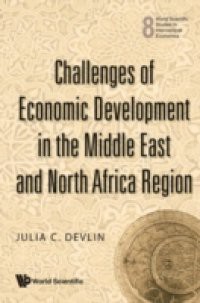This book surveys major economic issues in the development of countries in the Middle East and North Africa (MENA) region since World War II. It presents a framework of analysis highlighting underlying continuities in the region's approach to issues of growth, management of oil and natural resources, post-conflict environments, progress in trade liberalization and regional integration, the use of industrial policy, labor market adjustment and unemployment, educational attainment and poverty incidence. At the same time, this book focuses on emerging differences across countries in the region in the prevailing approach to addressing such challenges most notably between the economies of the Gulf Cooperation Council and other MENA countries.This book also incorporates a discussion of tools and methods used by development practitioners and briefly examines issues of aid effectiveness. The approach used is intended to appeal to a wide audience including students of economic development, political scientists and development practitioners.Contents:Is MENA Exceptional?State Formation, Consolidation, and Development, 1960s–1980sToward Greater Use of Markets and the Global Economy?Oil, OPEC, and the Challenges of Surplus ManagementWater Scarcity and Agricultural Policy in the MENA RegionBuilding a New Future: Development in the Post-Conflict Context and Post-Disaster RecoveryIs the MENA Region “Open” for Business?Making Global Integration Work for MENA CountriesAre Market Disciplines Sufficient? Industrial Policy and Technology TransferThe Keys to the Future: Human Capital Development in the MENA RegionAre MENA's Labor Markets the Key to Growth?Closing the Poverty Gap in MENADevelopment Assistance and Its Effectiveness in MENA CountriesPathways to Future ProsperityReadership: Undergraduates, graduates and academics interested in economic development and the Middle East and North Africa (MENA) region; development practitioners.


















